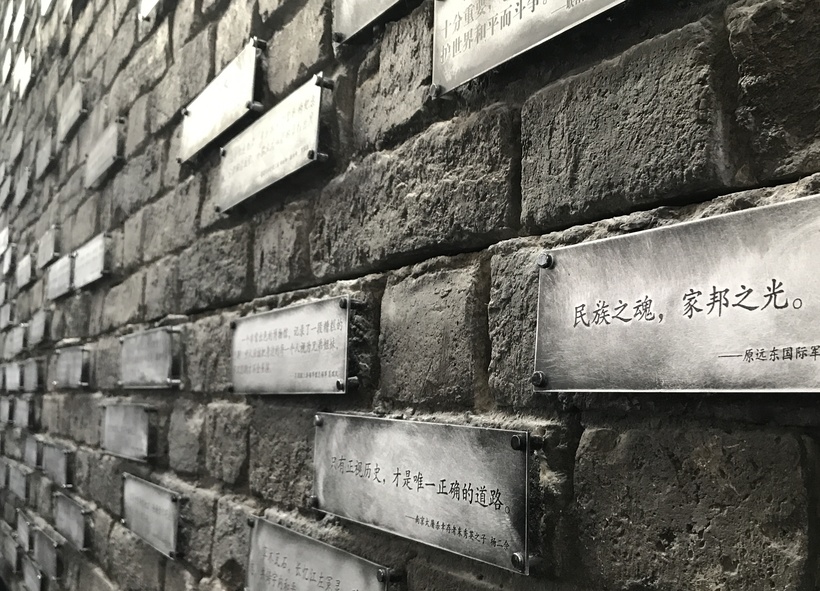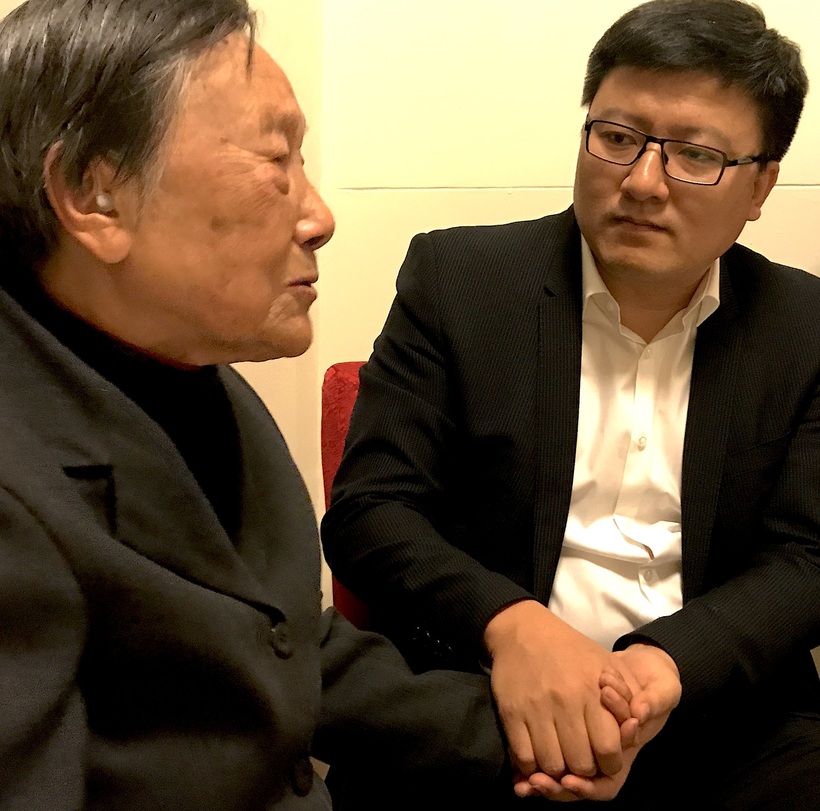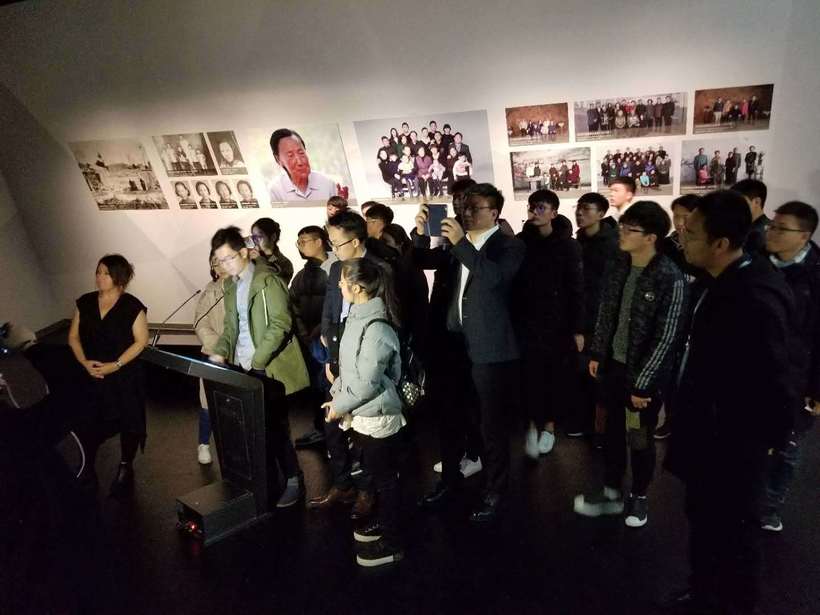A Mosaic of Memory: The Nanjing Massacre 80 Years On

Eighty years ago this week, Japanese troops marched into Nanjing, then capital city of China, and began a six week brutal attack on the Chinese civilian population. Those who had not managed to escape the advancing army, men, women and children, were tortured, raped and killed, bayonets thrust into children, bullets shot into their parents at close range. The death toll of 300,000 decimated the population of Nanjing and was not only a harbinger of what was to come across Japanese occupied Asia, but indeed, across the globe as the full force of World War II was unleashed the following year.
I was in Nanjing this week to represent USC Shoah Foundation at the National Memorial Ceremony commemorating victims of the massacre. I stood alongside the last few survivors of the carnage, those who witnessed events with their own eyes, the scars still visible on their bodies. There were also thousands of Chinese school children and military personnel assembled in perfectly straight lines to honor the past. Heading the ceremonies was President Xi Jinping, leader of one of the most powerful nations on earth.
The commemoration struck a reconciliatory tone. It is no secret that China’s long held distrust of the Japanese has not been helped any by the intransigence of the Japanese to acknowledge the atrocities their forebears committed. But with the entire leadership of China gathered just a few feet away from me, Yu Zhengsheng, one of the most powerful people in China and Chairman of the National Committee of the Chinese People’s Political Consultative Conference delivered the annual speech. His invocation was made for more peaceful coexistence between the peoples of Japan and China. Of course there is a lot at stake; global economics, regional instability, unpredictable politics in the United States, to name but a few. But there was also the real sense that when he pledged China would not be aggressors to other nations, that the blood soaked ground on which we stood and the survivors watching on would keep account.
 Mdm Xia Shuqin describes her experiences to Mr Chi Cheng of the Tianfu Group, Nanjing, on 13 December, 2017, 80 years after the massacre began, when she was eight years old.
Mdm Xia Shuqin describes her experiences to Mr Chi Cheng of the Tianfu Group, Nanjing, on 13 December, 2017, 80 years after the massacre began, when she was eight years old.Given pride of place in the crowd of at least fifteen thousand Chinese attendees were a small collection of American and European guests whose grandparents had stayed in Nanjing during the massacre. Their forebears had rescued at least 50,000 Chinese civilians from otherwise certain death, when they created the Nanjing safety zone. I talked with Thomas Rabe whose grandfather John Rabe had led the rescue effort, and to Chris and Rick Magee, whose grandfather had famously used a home movie camera to document the atrocities. I was struck by how ordinary their families were and yet how extraordinary their bravery had been. Eighty years on their moral choices are still examples to follow.
Among the guests at the memorial events were corporate representatives of the Tianfu Group, led by Mr Chi Cheng. In the rapidly growing economy of China, the impression of corporate China being an unstoppable juggernaut is not far off the mark. However, philanthropy is also beginning to emerge as a means to have impact in the new mega market. Tianfu Group have funded video testimony of over one hundred survivors of the massacre; they have supported the development of an interactive New Dimensions in Testimony installation in Mandarin; and the production of a forthcoming documentary film about the massacre directed by academy award winning Director Vanessa Roth entitled, The Girl and the Picture, which will be released next year. Their executives were sitting holding hands with survivor Xia Shuqin, taking in every word, filming her to pass her message to many thousands of their employees across China.
 Students gather around as New Dimensions in Testimony Mandarin Project Assistant, Cheng Fang demonstrates interactive testimony, with creator and producer, Heather Maio-Smith, at the Nanjing Massacre Memorial 13 December 2017.
Students gather around as New Dimensions in Testimony Mandarin Project Assistant, Cheng Fang demonstrates interactive testimony, with creator and producer, Heather Maio-Smith, at the Nanjing Massacre Memorial 13 December 2017.Inside the newly refurbished core museum there were some quite stunning changes. Museum curator, Director Zhang, has brought the stories of survivors to the very front of the museum, replacing the epic tableaus of war and terror with the silent dignified box files of testimony greeting visitors, floor to ceiling. Faces and names predominate in a museum more suited to the story of a universal humanity. I watched as children gathered around Xia Shuqin, mesmerized as her video likeness answered questions as a part of the New Dimension in Testimony exhibit, their guide struggling to pull them away. The former exhibit on the Sino-Japanese war, heavily laden with propaganda, has been replaced with poster art on the theme of peace. It is a quite remarkable change, ideologically as well as from an aesthetic perspective.
The mosaic of memory unfolding around me throughout the day was very apparent. People whose lives were caught up in the specific events that occurred in Nanjing eighty years ago were finding ways to tell a universal message of legacy, peace, and reconciliation. As the TV cameras panned the memorial grounds the scene was that of an homogenous mass of humanity dressed in black. China often appears that way. But don’t be fooled. Zoom in, and the many strands of memory and legacy weaved in and out of the crowd, creating a rich and varied tapestry. Eighty years on, the survivors lived to see their testimonies used to create a better world than they every thought possible.
Like this article? Get our e-newsletter.
Be the first to learn about new articles and personal stories like the one you've just read.
